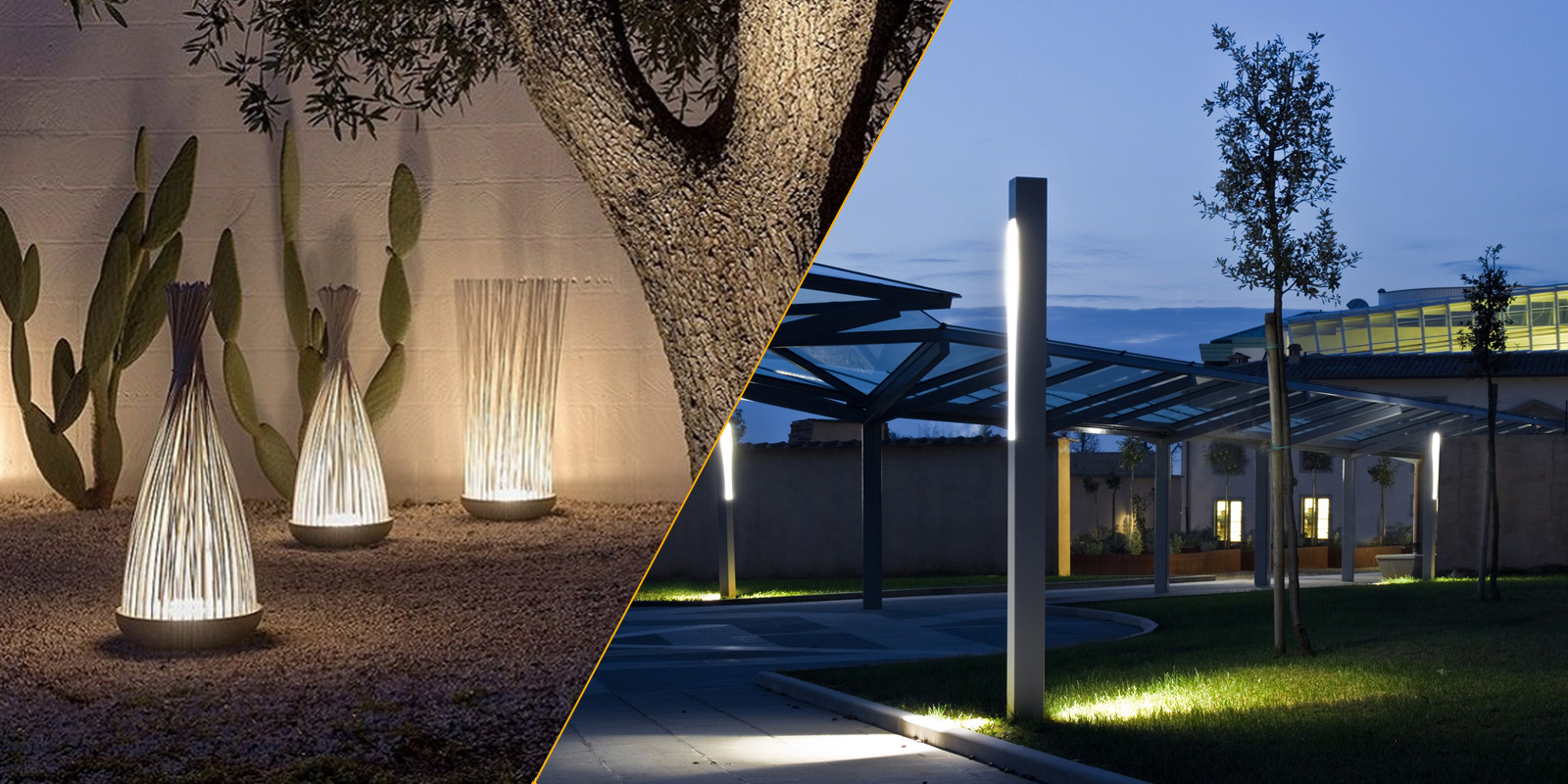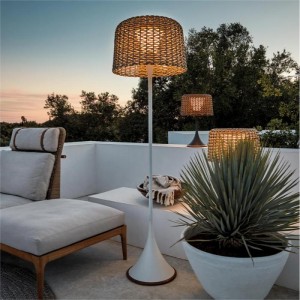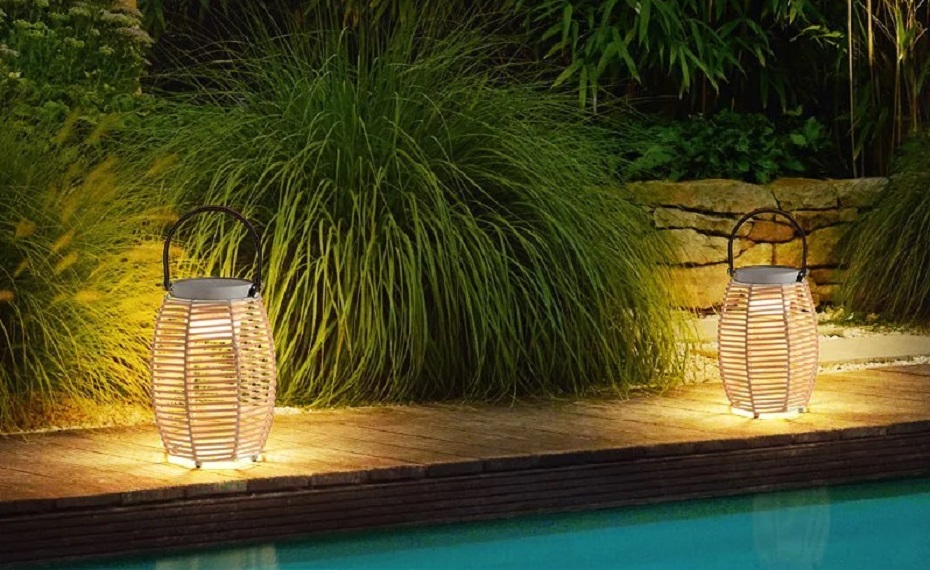When choosing outdoor lighting, many people will face a common question: What is the difference between garden lights and outdoor lights? Although both are used for outdoor lighting, there are significant differences in design, function, application scenarios, etc. This article will analyze the difference between garden lights and outdoor lights in detail.
1. Definition of garden lights and outdoor lights
Garden lights
Garden lights are specially designed for gardens and are usually installed in outdoor spaces such as the front yard, backyard, garden or courtyard path of a house. This type of lamp is characterized by a combination of decorative and functional features. It can provide moderate lighting and add beautiful visual effects to the courtyard.
Outdoor lights
The scope of outdoor lights is wider, covering all lamps that provide lighting for outdoor environments, including road lights, landscape lights, building exterior wall lights, parking lot lights, etc. The design of outdoor lights is more functional and is usually used for large-scale lighting, improving safety and practicality.

2. Differences in functions and uses
2.1 Functions and uses of garden lights
The main purpose of garden lights is to provide lighting for residential courtyards or gardens, and also to have the functions of decoration and atmosphere creation. Its functions generally include:
Decorative lighting: Garden lights are often used to embellish gardens, paths, porches and other areas, adding visual layers and beauty to the courtyard.
Functional lighting: In addition to decorative functions, garden lights can also be used for basic lighting for night activities, such as providing safe light sources on paths, leisure areas and driveways.
Creating atmosphere: Through soft light, garden lights can create a warm and peaceful outdoor atmosphere, suitable for family gatherings or evening leisure time.
2.2 Functions and uses of outdoor lights
Outdoor lights have a wider range of functions and are usually used to provide functional lighting for large areas, mainly to ensure the safety and practicality of outdoor places. Its main uses include:
Public lighting: Outdoor lights are mostly used in public areas such as roads, parking lots, and squares to ensure the safety of pedestrians and vehicles.
Security lighting: Outdoor lights used in monitoring areas, walls, and around buildings are usually brighter to ensure safety and visibility at night.
Landscape lighting: In parks, scenic spots, or around buildings, outdoor lamps can also be used to enhance the overall landscape effect, but their functionality is still the main consideration.
3. Differences in design and appearance
3.1 Design style of garden lights
Garden lights usually pay more attention to appearance design and pursue coordination with the overall environment of the garden. Its design styles are diverse to suit different garden styles and aesthetic needs:
Retro style: Garden lights with European and classical design elements are suitable for traditional style gardens.
Modern minimalist style: Garden lights with simple lines and stylish shapes are suitable for modern garden designs and can enhance the modern and fashionable sense of the garden.
Decorative elements: Garden lights usually add decorative elements such as carvings, lampshade design, colors, etc. to enhance visual appeal.
3.2 Design style of outdoor lights
Compared with garden lights, the design of outdoor lights considers practicality and functionality more, and the appearance tends to be simple and durable:
Simple and practical: Outdoor lights are generally simple in design, made of solid materials, and focus on waterproof, dustproof and windproof capabilities, suitable for various harsh environments.
Functionality-oriented: Outdoor lamps usually do not pursue decoration too much, and brightness and coverage area are the core considerations of the design.
Durable materials: Outdoor lights are made of corrosion-resistant and oxidation-resistant materials, such as aluminum alloy, stainless steel, etc., to cope with the challenges of long-term exposure to wind and rain.
4. The difference between light source and brightness
4.1 Light source and brightness of garden lights
Garden lights generally use lower-power light sources to provide soft lighting effects, suitable for creating a comfortable and warm atmosphere. Common light sources include:
LED light source: LED garden lights have low power, low energy consumption, and long life, and are the mainstream choice for garden lighting.
Warm white light and yellow light: In order to create a warm atmosphere, garden lights usually use warm white light or yellow light, which is moderate in brightness but not too glaring.
Energy saving and environmental protection: More and more garden lights use solar light sources, which are charged during the day and automatically illuminated at night, which is energy-saving and environmentally friendly.
4.2 Light source and brightness of outdoor lights
Outdoor lights usually need to provide higher brightness to cover a wide range of lighting needs, so the power and brightness are often higher than garden lights. Common light source types include:
High-brightness LED lights: LED outdoor lights have higher brightness output and are suitable for lighting large areas, such as parking lots or public roads.
Cold white light: Outdoor lights often use cold white light sources to improve visibility and safety, especially on traffic roads or industrial areas.
Energy saving and high efficiency: Similarly, outdoor lights are increasingly using solar energy or high-efficiency energy-saving light sources to meet long-term outdoor lighting needs.
5. Differences in installation and maintenance
5.1 Installation and maintenance of garden lights
The installation of garden lights is usually relatively simple and can be done by yourself or by professionals. Most garden lights need to consider the following installation features:
Ground or wall installation: Garden lights are mostly installed on the ground or wall, in the form of lamp posts or wall lamps.
Low-voltage circuits: Due to their low power, garden lights often use low-voltage circuits or solar panels, without the need for complex cable laying.
Simple maintenance: Most garden lights have a long service life and low maintenance costs, especially those using LED or solar technology, which almost do not require frequent replacement of light sources or batteries.
5.2 Installation and maintenance of outdoor lights
The installation of outdoor lights is more complicated, especially for large lighting systems used in public areas. Its characteristics include:
High pole installation: Outdoor lights are usually installed on high poles to cover a wider range, especially in places such as parking lots and roads.
Professional installation: Due to the involvement of high-voltage circuits or large light sources, the installation of outdoor lamps usually requires professional electricians.
High maintenance requirements: Outdoor lamps are exposed to wind and rain and require regular maintenance all year round, such as cleaning the lampshade, checking the wires and the waterproof performance of the lamps.
6. Differences in materials and durability
6.1 Material and durability of garden lights
The material of garden lights usually focuses on the combination of beauty and durability:
Aluminum alloy, stainless steel, synthetic materials: These materials are often used for the outer shell of garden lights, which can not only prevent corrosion but also maintain a good decorative effect.
Glass or acrylic lampshade: Lampshades made of glass or scratch-resistant plastic can not only improve the appearance, but also prevent the wear and tear of the lamp during long-term use.
6.2 Material and durability of outdoor lights
The material of outdoor lights mainly focuses on durability such as wind and rain resistance and corrosion resistance:
Sturdy alloy material: The materials used in outdoor lights are usually more sturdy, such as aluminum alloy or stainless steel, which can be used for a long time under harsh weather conditions.
Waterproof and dustproof level: The protection level (IP level) of outdoor lamps is relatively high, usually above IP65, to ensure that the lamps can still work normally in heavy rain and dusty weather.
Recommend Reading
Post time: Sep-14-2024










